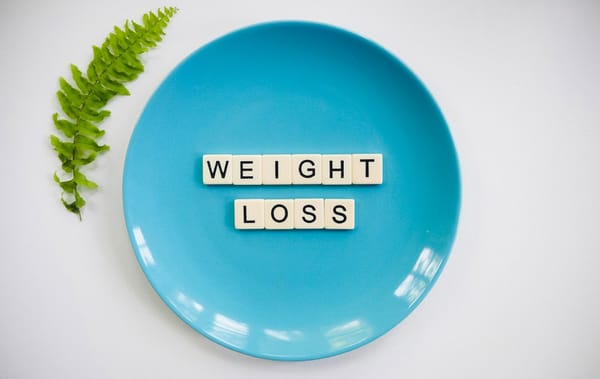Why Two People With the Same TDEE Can Have Different Body Compositions

The Total Daily Energy Expenditure (TDEE) is a highly critical caloric need for an individual to maintain body weight. However, two people with the same values might end up with different results. One may be a lean and muscular competitor, while the other may be within a range having a higher body fat percentage.
This article sets forth some reasons why that might be and factors other than caloric input or output that might be involved in determining the composition of one's body.
What is TDEE?
The total energy in calories expended by an individual in the course of a day is what is referred to as TDEE, and it comprises four main components:
- Basal Metabolic Rate (BMR) — The energy required for low-level body functions like breathing, circulation of blood, and cell production while at rest.
- Thermic Effect of Food (TEF) — Energy expended during digestion and absorption of nutrients.
- Non-Exercise Activity Thermogenesis (NEAT) — The energy that is burned through everyday activities such as walking, fidgeting, and maintaining one's posture.
- Exercise Activity Thermogenesis (EAT) — Calories expended through intentional physical activity, like workouts and sports.
The TDEE of two people may be the same, but the resulting variations in body composition will be due to differences in energy utilization and storage.
Factors Other Than TDEE That Affect Body Composition
1. Muscle Mass vs. Fat Mass
One of the major factors that lead to differences in body shape even if TDEE is the same is the balance between muscle and fat in the body. Compared to fat, muscle is more metabolically active at rest and burns more calories.
In other words, a person with more muscle mass has a higher BMR and more calories burned throughout the day, including during rest. This affects how efficiently a body can process food and maintain weight.
2. Macronutrient Distribution
Not just calories, but the type of macronutrients consumed plays a crucial role in determining body composition. A high-protein diet supports muscle maintenance or growth, leading to a leaner physique, while a diet high in processed carbohydrates and unhealthy fats may promote fat storage.
Additionally, protein has a higher thermic effect, meaning the body expends more energy digesting and metabolizing it compared to fats and carbohydrates. This slight increase in calorie burn can make a difference in body composition over time.
3. Hormonal Differences
Hormones significantly influence how the body processes calories and stores fat. Insulin sensitivity, cortisol levels, testosterone, and thyroid hormones all affect metabolism and fat storage.
For example, high insulin sensitivity promotes better nutrient partitioning, meaning more calories go to muscle rather than fat. On the other hand, elevated cortisol levels (often due to stress or poor sleep) can increase fat accumulation, particularly around the abdominal area.
4. NEAT Variability
Even if two individuals have the same calculated TDEE, their NEAT levels can differ greatly. Some people naturally fidget more, take more steps throughout the day, or have jobs requiring more movement, leading to a higher total energy burn.
Conversely, someone with a sedentary lifestyle who sits for long hours may store more fat, even if their TDEE appears to be the same on paper.
5. Type of Training and Its Intensity
Exercise style greatly affects body composition. Resistance training promotes muscle growth and increases metabolism, while steady-state cardio primarily burns calories without significantly preserving muscle.
High-intensity interval training (HIIT) combines both benefits, enhancing fat loss while preserving lean muscle mass, ultimately leading to a more defined and toned physique.
6. Metabolic Adaptations and Efficiency
The body adapts to caloric intake and expenditure over time. Someone who has been in a prolonged calorie deficit may experience metabolic adaptation, meaning their body becomes more efficient at using fewer calories, slowing fat loss.
Conversely, someone who consistently engages in resistance training and maintains an active lifestyle may have a more adaptive metabolism, burning more calories even at rest.
7. Differences in the Gut Microbiome
Gut bacteria influence how the body processes and stores food energy. Two people consuming the same diet and calorie intake may absorb different amounts of energy due to differences in their gut microbiota.
Certain bacteria strains promote fat storage, while others enhance metabolism, meaning gut health can play a crucial role in body composition outcomes.
8. Genetic Factors
Genetics play a role in metabolism, muscle-building potential, and fat storage tendencies. Some individuals naturally burn calories more efficiently or build muscle more easily.
Although lifestyle choices remain a dominant factor, genetic predispositions can make it easier or harder for some people to achieve a leaner physique.
9. Sleep Quality and Recovery
Sleep deprivation negatively impacts metabolism, hormone regulation, and appetite control. Poor sleep increases cravings for high-calorie foods and can slow muscle recovery.
Someone with good sleep hygiene will likely have better hormone regulation, lower stress levels, and an easier time maintaining a leaner body composition compared to someone with chronic sleep deprivation.
Conclusion
TDEE is a useful tool for estimating caloric needs, but body composition depends on far more than just energy balance. Factors like muscle mass, macronutrient intake, hormonal regulation, NEAT, exercise type, metabolic efficiency, gut health, genetics, and sleep quality all contribute to differences in physique.
By optimizing these factors through strategic nutrition, strength training, and healthy lifestyle habits, individuals can improve their body composition and achieve their desired fitness goals.



